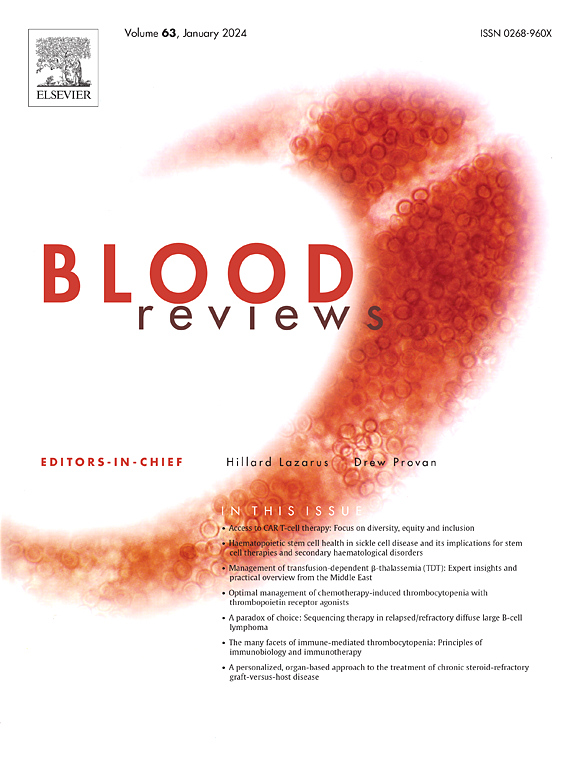Practical guidance on the prevention and management of infection in multiple myeloma patients: A case-based approach
IF 6.9
2区 医学
Q1 HEMATOLOGY
引用次数: 0
Abstract
The risk of infection in multiple myeloma patients is significant, due to immune dysfunction secondary to myeloma, immunosenescence and age-related comorbidities, given the elderly myeloma patient demographic. Newer treatments, despite providing unprecedented improvements in disease-control, have further elevated infection risk. This risk is so substantial that we are approaching a period where a subset of older myeloma patients may be more likely to die secondary to infectious complications imposed by redirected T-cell therapy rather than from myeloma. As a result, it is essential to provide myeloma patients with the appropriate prophylaxis and monitoring against infection. In this review, we discuss disease-related, patient-related and treatment-related reasons for the increased infection risk in myeloma patients, and how to both prevent and manage this risk through creating a dynamic, infection prevention plan that is personalised to the individual patient.
预防和管理多发性骨髓瘤患者感染的实用指南:基于病例的方法。
考虑到老年骨髓瘤患者的人口统计,多发性骨髓瘤患者感染的风险是显著的,因为骨髓瘤继发的免疫功能障碍、免疫衰老和年龄相关的合并症。新的治疗方法尽管在疾病控制方面提供了前所未有的改善,但却进一步提高了感染风险。这种风险是如此巨大,以至于我们正在接近这样一个时期,即一部分老年骨髓瘤患者可能更有可能死于重定向t细胞治疗引起的感染性并发症,而不是死于骨髓瘤。因此,为骨髓瘤患者提供适当的预防和监测感染是至关重要的。在这篇综述中,我们讨论了骨髓瘤患者感染风险增加的疾病相关、患者相关和治疗相关的原因,以及如何通过制定针对个体患者的动态感染预防计划来预防和管理这种风险。
本文章由计算机程序翻译,如有差异,请以英文原文为准。
求助全文
约1分钟内获得全文
求助全文
来源期刊

Blood Reviews
医学-血液学
CiteScore
13.80
自引率
1.40%
发文量
78
期刊介绍:
Blood Reviews, a highly regarded international journal, serves as a vital information hub, offering comprehensive evaluations of clinical practices and research insights from esteemed experts. Specially commissioned, peer-reviewed articles authored by leading researchers and practitioners ensure extensive global coverage across all sub-specialties of hematology.
 求助内容:
求助内容: 应助结果提醒方式:
应助结果提醒方式:


